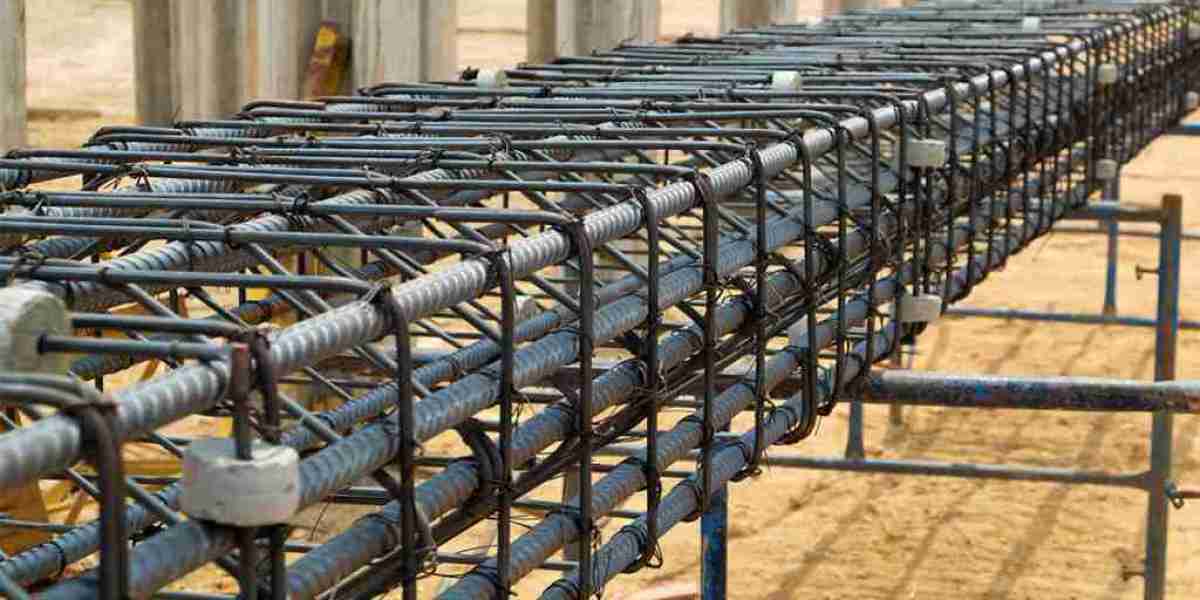In the world of modern construction, where structures reach unprecedented heights and must withstand extreme forces, precision engineering is paramount. Among the various behind-the-scenes players that contribute to safe and resilient buildings, rebar detailing services stand out as a vital component of structural engineering success.
Rebar, short for reinforcing bar, is a steel bar used in concrete construction to provide tensile strength and durability. While its function may seem straightforward, the planning and placement of rebar is a highly technical process—one that relies on accurate detailing to translate engineering intent into reality.
In this article, we explore how rebar detailing services fit into the larger picture of structural engineering, why they’re indispensable in modern projects, and what trends are shaping their evolution.
What Are Rebar Detailing Services?
Rebar detailing services involve the creation of highly detailed drawings and documentation that guide the fabrication and placement of rebar in reinforced concrete structures. These services bridge the gap between structural design and on-site execution.
Key deliverables from rebar detailing services include:
? Shop drawings showing the type, size, and position of each rebar
? Bar bending schedules (BBS) for fabrication
? Material quantity takeoffs
?️ Rebar placement plans for site crews
Rebar detailers interpret the design provided by structural engineers and create constructible documentation that fabricators and contractors can use without ambiguity or error.
Why Rebar Detailing Is Essential in Structural Engineering
1. ?️ Translating Design into Constructability
Structural engineers design buildings to withstand complex loads—dead loads, live loads, wind, seismic, and more. Their blueprints specify the performance requirements of structural members, but not always the practical means of achieving them.
Rebar detailing services take these blueprints and:
Identify exact rebar sizes and locations
Account for overlaps, splices, bends, and hooks
Provide data for fabrication and fieldwork
This ensures that the engineer’s vision becomes a reliable, buildable structure.
2. ? Ensuring Structural Safety and Compliance
Accurate detailing is critical to achieving:
Proper tension resistance
Uniform load distribution
Adequate concrete coverage
Resistance to cracking and fatigue
It also ensures compliance with international building codes such as:
ACI (American Concrete Institute)
BS (British Standards)
Eurocode
IS Codes (India)
Rebar detailing services help avoid unsafe practices like rebar congestion, insufficient cover, and misaligned bars—all of which can compromise structural safety.
3. ⏱️ Optimizing Project Time and Budget
Poor rebar detailing can result in:
Fabrication errors
Wasted steel
On-site rework
Delays in concrete pours
Accurate detailing services:
Minimize material waste through optimal cutting and bending
Help schedule deliveries more efficiently
Reduce installation time by eliminating guesswork
The result is better control over timelines and costs, which is crucial in large-scale commercial and infrastructure projects.
4. ? Supporting Engineering Teams with Expert Input
In many modern projects, rebar detailers collaborate directly with engineers to:
Suggest improvements to constructability
Highlight areas of concern (e.g., congestion, clashes)
Provide alternative layout options or splice locations
This proactive collaboration enhances the overall quality of the structural design and reduces the risk of issues during construction.
Technology’s Impact on Rebar Detailing
The rise of advanced software tools has transformed rebar detailing from 2D drafting into an integrated part of Building Information Modeling (BIM) and digital construction.
Popular Rebar Detailing Tools:
| Software | Capabilities |
|---|---|
| Tekla Structures | Full 3D modeling, clash detection, integrated scheduling |
| Revit with Rebar Extensions | BIM-ready 3D rebar layouts, code compliance |
| AutoCAD + Rebar Plugins | Fast 2D drafting and BBS generation |
| CADS RC | Used widely in UK-based projects for standardized detailing |
| Sofistik | Combines structural analysis and rebar modeling |
These tools enable:
? Real-time quantity tracking
⚠️ Clash detection with MEP and other systems
? Easy revisions and version control
? Enhanced visualization for clients and stakeholders
Incorporating detailing services into BIM workflows ensures seamless coordination across disciplines and reduces the chance of surprises on site.
Rebar Detailing in Complex Modern Structures
As architecture and engineering become more ambitious, so does the demand on structural components. Rebar detailing has become especially crucial in:
? High-Rise Buildings
With slender columns and tight cores, detailed rebar planning is vital to prevent congestion and maintain constructability.
?️ Infrastructure Projects
Bridges, tunnels, and highways require complex rebar cages that must endure high loads and environmental exposure.
? Hospitals and Data Centers
These buildings require both structural strength and layout flexibility, demanding precision detailing around embedded systems.
? Seismic-Resistant Design
Regions prone to earthquakes rely on special rebar arrangements (e.g., confinement ties, ductile detailing) that must be perfectly implemented.
Rebar detailing services provide customized solutions tailored to the needs of each project type.
Benefits of Outsourcing Rebar Detailing Services
Many structural engineering firms and contractors outsource rebar detailing to specialists. Here’s why:
✅ Specialized Expertise
Detailers understand regional code requirements and best practices across industries.
✅ Cost Efficiency
Outsourcing reduces the need for in-house drafting teams and expensive software licenses.
✅ Scalability
External services can handle large or fast-track projects without overwhelming internal teams.
✅ Quality Assurance
Reputed detailers follow multi-step review processes and ensure zero-error documentation.
By outsourcing, engineering teams can focus on design while relying on detailers for accuracy, speed, and constructibility.
The Future of Rebar Detailing in Structural Engineering
As structural engineering evolves, rebar detailing services are poised to become even more integrated and intelligent. Key trends include:
? AI-powered clash detection and optimization
? Cloud-based collaboration platforms
? Parametric detailing tools
? Integration with robotic rebar bending and on-site automation
These advances will continue to improve project predictability, reduce waste, and enhance structural resilience.
Conclusion: The Structural Engineer’s Best Ally
In modern construction, the role of rebar detailing services cannot be overstated. They ensure the seamless transformation of structural design into physical form—accurately, safely, and efficiently.
Structural engineers may determine what needs to be built, but it's the rebar detailers who make it possible to build it right. From ensuring code compliance to enabling faster construction and long-term durability, detailing services are the backbone behind the backbone of every modern structure.
In an industry where every inch of steel and every second on site counts, investing in accurate, professional rebar detailing services isn’t optional—it’s essential.




